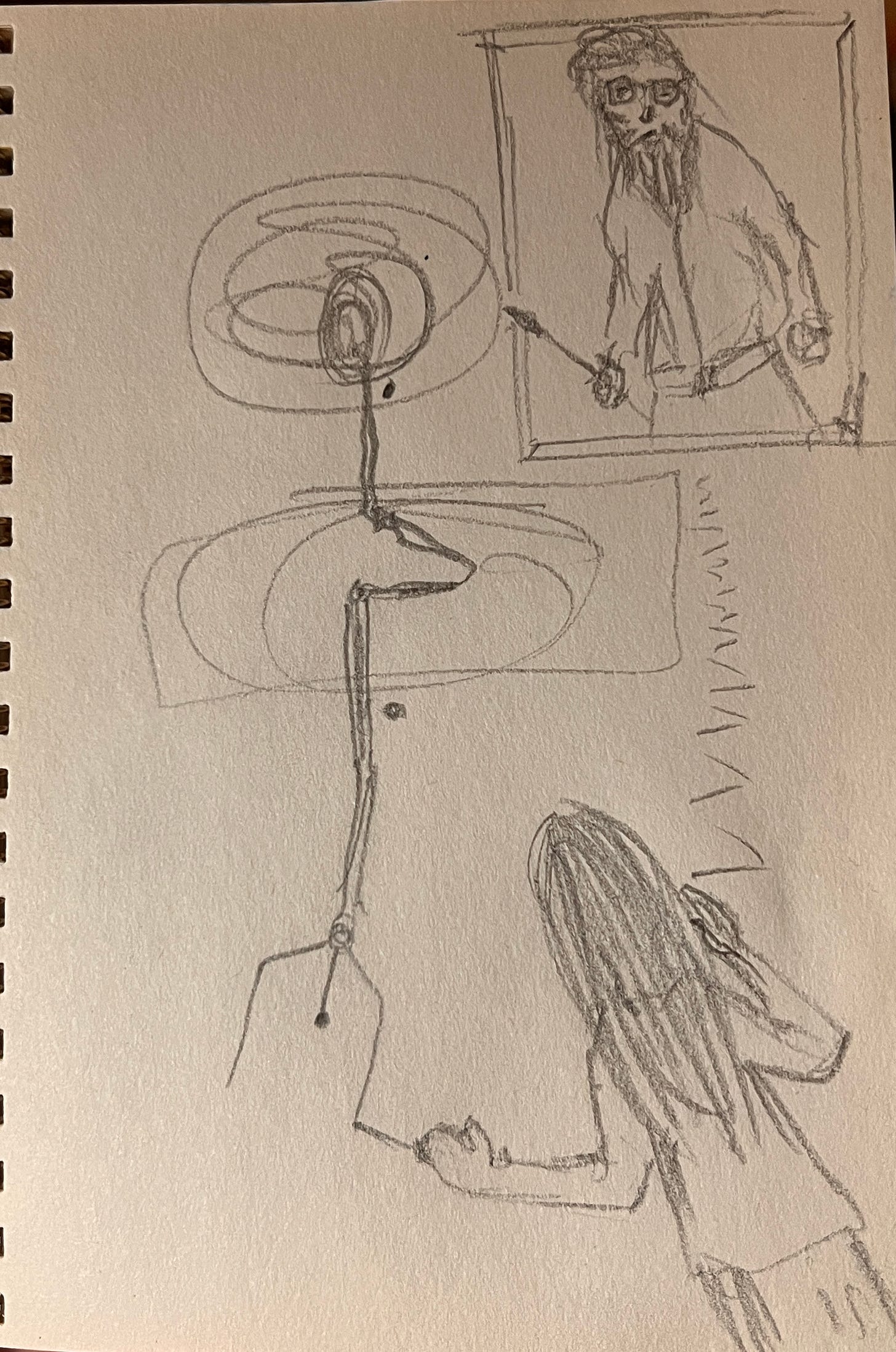Malta, 2024
“I’m going to an art gallery.”
I knew as the words left my mouth that neither of my travelling companions was likely to have any interest in a 2.5-hour bus trip (each way) that was going to be required to reach my destination.
Indeed, there was no mad dash to grab bus passes and refill water bottles as I tucked a sketchbook into my day pack, checked the weather to see if rain was likely, and headed out our hotel room door.
We were staying near Mellieha, toward the north end of the island and my destination, the Victor Pasmore Gallery, was down in Valletta, the capital of Malta.
If you happen to be an aficionado of mid-century British abstract art theory, you’ll know immediately who Victor Pasmore was. You won’t need me to tell you just how influential he was for a generation (or two) of artists. I only vaguely knew about him because Dad was one of those artists who came of age in the 50’s and 60’s in the UK and to Dad, Pasmore was a larger-than-life mentor, someone of whom he spoke with fondness, admiration, and respect.
At some point in our conversations, Dad must have mentioned that in 1966 Victor and Wendy Pasmore (Pasmore’s wife was an artist in her own right) escaped the dreary grey of British winters in favour of the sunnier climate found in Malta. For whatever reason, I had blocked this factoid from my mind until I was sitting poolside at our hotel, searching online for a possible art museum expedition.
[Curious what’s going on in the video? This was a collaborative project in which the artist Matthew Attard captured his eye movements as he viewed the unfinished project Monument to the Unknown Soldier by Antonio Sciortino. These eye movements were then plotted, captured, and exported to produce lines that reflect his viewing of the artwork. This piece was included in the exhibition that explored line, one of the fundamental elements of art. And, storytelling. And, journeys.]
Brand new (the Victor Pasmore Gallery opened in 2014 after the former gunpowder magazine was converted and restored through a partnership between The Central Bank of Malta and The Victor Pasmore Foundation), the space is gorgeous and I knew as soon as I walked in that I was exactly where I was meant to be.
Memories of talks with Dad - about line, design, printmaking, abstraction, landscape, and visiting Victor and Wendy Pasmore at their home near Newcastle - drifted in and out of consciousness, whispers of what it might have been like had Dad accompanied me on this pilgrimage.
Hanging above the stairwell was a painting - long, vertical - stylized, abstract - titled The Fall of Icarus. Many years ago, Dad painted a large work with the same title (I wrote a bit about that here.) Had Dad known about Pasmore’s Icarus?
Standing in the stairwell, I wondered what it was about Pasmore that Dad had found so compelling. What Pasmore was doing must have been so different to the traditional representational work of the past. Dad had a thorough classical grounding in design, drawing, and painting - he understood colour theory and perspective and spent many hours exploring the fundamentals of line, form, mass, value, space, shape, and texture.
Pasmore removed those elements from their expected contexts and played with the possibilities that emerged. All of that made quite an impression on Dad, though his own purely abstract works were few and far between.
The Fall of Icarus was one of them.
[The Fall of Icarus, E. Colin Williams, A.R.C.A]
Where line and a limited colour palette dominate Pasmore’s Icarus, Dad’s painting is bold with colour and movement. Repeating forms (feathers, wings) provide the sense of flight and soaring - perhaps the final moment in which Icarus was suspended, just before the fall would have torn his feathers asunder. Pasmore’s Icarus emphasizes the descent and gives us a suggestion of a denuded figure plummeting. The elongated vertical shape of the painting accents the great distance between flight and fall.
[Me having a moment with Dad, Pasmore, and Icarus in Malta. That’s the
ghost of Dad, top right, in case you were wondering…]
[The first exhibition to be mounted at the Victor Pasmore Gallery focuses on line. What better place to begin? And so.. in the spirit of Icarus and line, here’s my visual contribution to this conversation.]
I’d love to go back and spend more time with the collection, maybe learn a bit about how the gallery and foundation are tackling the daunting project of cataloguing and making sense of an artist and his life’s work.
Would spending more time at the gallery, perhaps helping to catalogue the mentor’s work, teach me more about cataloguing Dad’s oeuvre? Would studying his mentor teach me more about how Dad was influenced and became the artist he was? Or would spending more time with Pasmore’s work just leave me with more questions than answers?
Truth be told, I would be happy to have an excuse to return to Malta. I loved it there. I was surprised, for some reason, that there was so much history about which I knew nothing.
I don’t know why I should have been surprised. If this past couple of years have taught me anything at all, it is that I know nothing. Doubtless, I will go to my grave ignorant of all the things I have no idea I do not know.
So, yeah - why NOT go back to Malta and see where this line of inquiry might take me?
For the artists in the crowd - tell me about your mentors and artistic influences - and, for the writers, who are the authors/poets/playwrights/wordsmiths whose voices you can’t get out of your head?









Yes you need to go back…. Follow your heart/ bliss